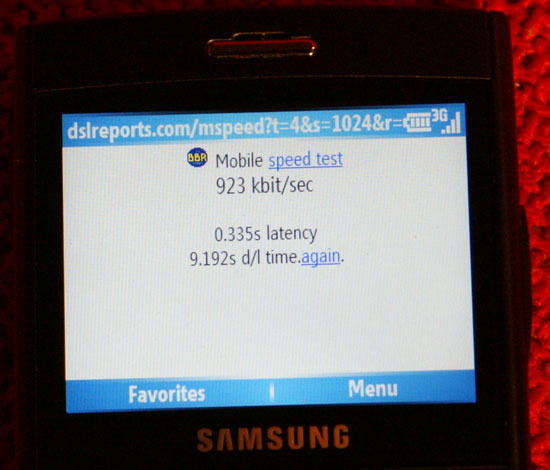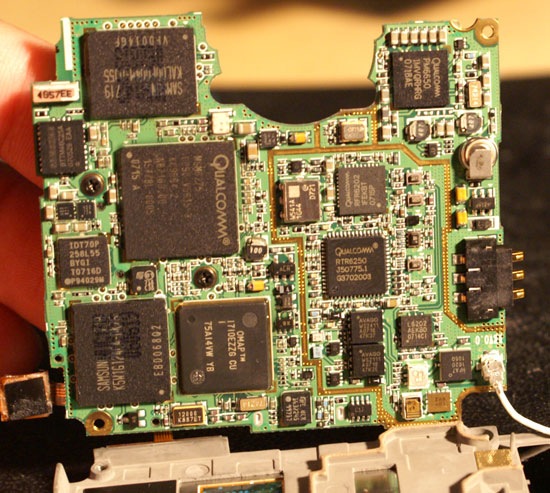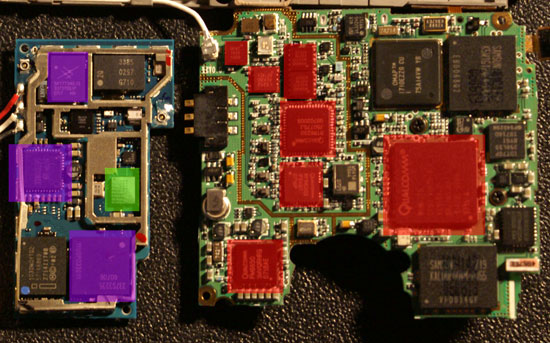No 3G on the iPhone, but why? A Battery Life Analysis
by Anand Lal Shimpi on July 13, 2007 3:53 AM EST- Posted in
- Smartphones
- Mobile
Most of the initial reviews of Apple's iPhone shared one complaint in common: AT&T's EDGE network was slow, and it's the fastest cellular network the iPhone supported. In an interview with The Wall Street Journal, Steve Jobs explained Apple's rationale for not including 3G support in the initial iPhone:
"When we looked at 3G, the chipsets are not quite mature, in the sense that they're not low-enough power for what we were looking for. They were not integrated enough, so they took up too much physical space. We cared a lot about battery life and we cared a lot about physical size. Down the road, I'm sure some of those tradeoffs will become more favorable towards 3G but as of now we think we made a pretty good doggone decision."
The primary benefit of 3G support is obvious: faster data rates. Using dslreports.com's mobile speed test, we were able to pull an average of 100kbps off of AT&T's EDGE network as compared to 1Mbps on its 3G UMTS/WCDMA network.

Apple's stance is that the iPhone gives you a slower than 3G solution with EDGE, that doesn't consume a lot of power, and a faster than 3G solution with Wi-Fi when you're in range of a network. Our tests showed that on Wi-Fi, the iPhone was able to pull between 1 and 2Mbps, which is faster than what we got over UMTS but not tremendously faster. While we appreciate the iPhone's Wi-Fi support, the lightning quick iPhone interface makes those times that you're on EDGE feel even slower than on other phones. Admittedly it doesn't take too long to get used to, but we wanted to dig a little deeper and see what really kept 3G out of the iPhone.
Pointing at size and power consumption, Steve gave us two targets to investigate. The space argument is an easy one to confirm, we cracked open the Samsung Blackjack and looked at its 3G UMTS implementation, powered by Qualcomm:

Mr. Jobs indicated that integration was a limitation to bringing UMTS to the iPhone, so we attempted to identify all of the chips Apple used for its GSM/EDGE implementation (shown in purple) vs. what Samsung had to use for its Blackjack (shown in red):

Motherboard Battle: iPhone (left) vs. Blackjack (right), only one layer of the iPhone's motherboard is present
The largest chip on both motherboards contains the multimedia engine which houses the modem itself, GSM/EDGE in the case of the iPhone's motherboard (left) and GSM/EDGE/UMTS in the case of the Blackjack's motherboard (right). The two smaller chips on the iPhone appear to be the GSM transmitter/receiver and the GSM signal amplifier. On the Blackjack, the chip in the lower left is a Qualcomm power management chip that works in conjunction with the larger multimedia engine we mentioned above. The two medium sized ICs in the middle appear to be the UMTS/EDGE transmitter/receivers, while the remaining chips are power amplifiers.
The iPhone would have to be a bit thicker, wider or longer to accommodate the same 3G UMTS interface that Samsung used in its Blackjack. Instead, Apple went with Wi-Fi alongside GSM - the square in green shows the Marvell 802.11b/g WLAN controller needed to enable Wi-Fi.
So the integration argument checks out, but what about the impact on battery life? In order to answer that question we looked at two smartphones - the Samsung Blackjack and Apple's iPhone. The Blackjack would be our 3G vs. EDGE testbed, while we'd look at the impact of Wi-Fi on power consumption using the iPhone.










36 Comments
View All Comments
jellinek - Friday, July 13, 2007 - link
Does the h.264 implementation on the iphone vs. the likely flash-based version on the blackjack impact this at all?Quicktime playback over the web (trailers set to loop?) might be a better way to determine EDGE/3G/WiFi battery life.
MrJim - Friday, July 13, 2007 - link
Anyone know if they will add MMS-messengering in iphone?GlassHouse69 - Friday, July 13, 2007 - link
fuck iphone.that's all I have to say.
stop reviewing it. it is lemming equipment that is overpriced and hobbled with a beautiful screen. feels like 5-6 years ago Mac intellect at use. get great graphical images, get stuck in the mud hardware, hobble it all somehow, charge 1000 dollars more than you need and bam, lemmings jump. wee!
DavenJ - Friday, July 13, 2007 - link
I guess this guy isn't going to buy an iPhone.Shark Tek - Friday, July 13, 2007 - link
Yeah I bet that he can't buy it.puffpio - Friday, July 13, 2007 - link
Is there a way to get this higher quality youtube feed for computers?? I'm tired of their pixelated crap.dacramer - Friday, July 13, 2007 - link
Who cares how LONG the battery lasts when loading web pages. The real test is how many web pages the battery can load per charge. Even if the battery lasts half as long over 3g, it surely must load more web pages. Is it more than double? 3g may not be so bad with regards to battery life with this taken into consideration.Icehawk - Friday, July 13, 2007 - link
I think the exact same thing - the more important metric is how many pages you can load not how long the battery lasts with constant clicking.Araemo - Friday, July 13, 2007 - link
"The biggest impact of all is, surprisingly enough, talk time; with 3G enabled, the Blackjack's talk time is cut in half, with absolutely no benefit realized from the higher bandwidth standard."Do you want to know why 3G is the default for talk time as well as data transfers? 3G has more bandwidth per cell tower, and talk over 3G uses the same total bandwidth as talk over GSM.. but since 3G increases the available bandwidth, you use less of the cell company's resources if you're talking using 3G instead of GSM. So battery life be damned, AT&T wants to make more money. ;)
cosmotic - Friday, July 13, 2007 - link
Your graph on the talk time page shows the iphone using wifi. Shouldn't that be edge?